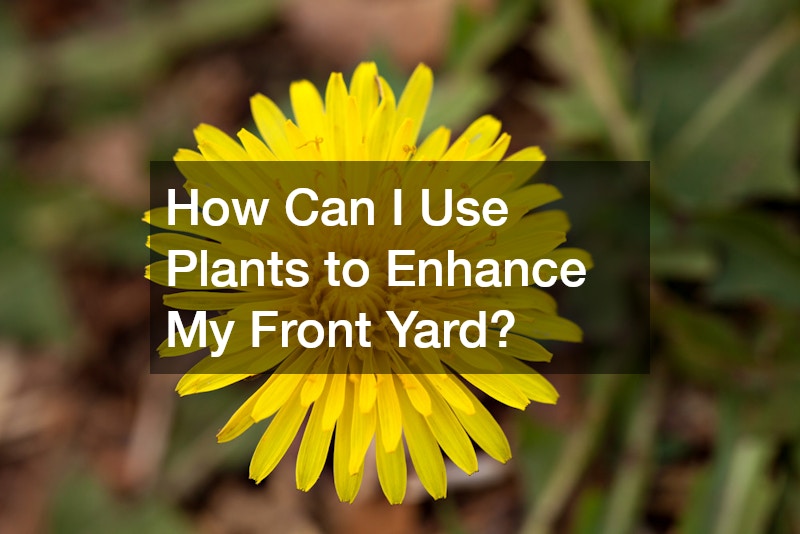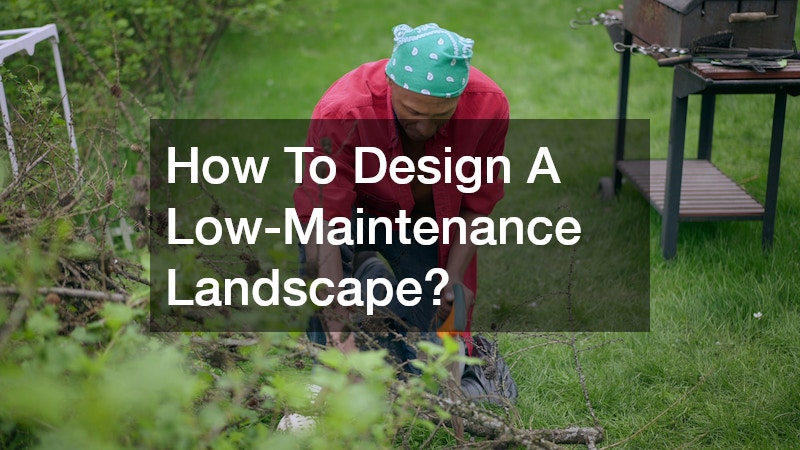When people approach your home, the first thing they notice is your yard, your porch, and the overall feel of your property. Enhancing curb appeal isn’t just about impressing visitors — it can also significantly increase your home’s value and give you a stronger sense of pride in your space. Fortunately, you don’t need a massive budget or professional help to make meaningful changes. Thoughtful landscape improvements can be simple, cost-effective, and enjoyable to tackle yourself.
This article explores ten easy landscape improvements that can transform your property’s exterior. We’ll cover everything from selecting the right plants and lawn type to eco-friendly ideas and creative DIY touches. Along the way, you’ll also find inspiration to tie in other elements of home upkeep — like checking your roofers for loose shingles, inspecting your water heater, or replacing outdated hurricane windows — because a beautiful landscape is most effective when the whole property is well cared for.
Read on for actionable tips, whether you want quick updates or a weekend project that yields lasting results. These landscape improvements will help you craft a welcoming, stylish exterior that feels like home.
1. How Can I Use Plants to Enhance My Front Yard?

Choosing The Right Plants
Selecting plants that thrive in your specific climate and soil is absolutely essential. Visit local nurseries, consult online guides, and consider talking to a gardening expert to identify flowers, shrubs, and trees that will flourish with minimal fuss. Incorporating drought-tolerant and native plants saves water, reduces maintenance, and supports local ecosystems, making it a smart, eco-friendly part of your landscape improvements.
Arranging For Maximum Impact
Layer plants of different heights, textures, and colors to create a dynamic, eye-catching yard. Position taller trees and shrubs along the perimeter or at the back, while placing vibrant flowers and smaller plants closer to pathways and entry points. This technique draws attention to your home’s architecture and complements other updates — such as installing hurricane windows or hiring roofers to repair your roof — by enhancing your home’s most beautiful features.
Maintaining Plant Health
Healthy, well-cared-for plants last longer and look significantly better. Regular watering, pruning, mulching, and fertilizing all play a role in keeping your yard vibrant. As part of these landscape improvements, inspect your irrigation system for leaks or clogs — especially if you’ve recently upgraded air conditioning services, plumbing, or had underground work done, which might affect water pressure and distribution.
2. What Are Some Quick Ways To Improve My Front Porch?
Decorative Lighting Options
Outdoor lighting adds warmth and personality to your porch, making it inviting at any hour. Choose fixtures that fit your home’s style and use warm, soft lighting to highlight architectural features or potted plants. Opt for energy-efficient LED or solar-powered bulbs to reduce electricity use — a sustainable and stylish choice for your landscape improvements.
Adding Comfortable Seating
Adding cozy seating makes your porch an inviting space to relax or entertain. A couple of weather-resistant chairs, a bench, or even a porch swing can make a big difference. Even if you’re juggling bigger projects like replacing asphalt shingle roofing or hiring a home restoration contractor, these simple porch enhancements deliver immediate curb appeal and comfort.
Incorporating Seasonal Decorations
Wreaths, potted flowers, seasonal lanterns, or themed doormats create a warm and festive atmosphere all year long. Changing decorations with the seasons is one of the simplest and most affordable landscape improvements, keeping your entry fresh and cheerful no matter the time of year.
3. How Do I Select The Best Type Of Lawn?
Assessing Climate And Soil
Your region’s climate and soil composition heavily influence which grass types will succeed. Consult local guides or lawn care professionals to determine what varieties suit your area. If you live in a drier climate, drought-resistant grasses are ideal for cutting down on water use and ensuring long-term success with your landscape improvements.
Comparing Grass Varieties
Different grass types have different textures, colors, and maintenance needs. Some homeowners prefer a lush, deep-green lawn that feels soft underfoot, while others opt for hardier, low-maintenance blends that complement rock gardens or pathways. Choose a variety that aligns with your aesthetic, lifestyle, and other landscape improvements.
Establishing A Care Routine
A healthy lawn requires consistent care, including mowing, watering, aeration, and fertilizing. Installing an automatic sprinkler system can save time and ensure your grass stays vibrant. As part of your overall landscape improvements, establishing a routine helps protect your investment and keep your lawn looking its best.
4. What Types Of Pathways Best Enhance Curb Appeal?

Material Selection For Paths
Stone, brick, gravel, and pavers are popular choices for pathways, each adding unique charm. Choose materials that complement your home’s exterior colors and textures, creating a cohesive look alongside updates like roofing services or impact windows. Durable materials also stand up to weather and foot traffic over time.
Designing Pathway Layouts
The shape of your pathway influences the mood of your yard. Gentle curves add a sense of movement and mystery, encouraging exploration, while straight paths offer a formal, elegant feel. These thoughtful landscape improvements protect your grass from foot traffic while guiding guests to your door.
Ensuring Durability And Safety
Ensure pathways are level, properly installed, and include adequate drainage to prevent puddles and reduce slipping hazards. Durable, well-designed paths also make it easier for visitors, delivery personnel, and service providers — such as local locksmith companies or sliding door repair companies — to reach your door safely and comfortably.
5. How Can I Improve My Garden Bed Aesthetics?
Color Coordination And Themes
A coordinated color palette gives your garden beds a polished, intentional feel. Choose colors that complement your home’s façade or go bold with vibrant hues for a lively effect. These creative landscape improvements add character and ensure your garden makes a lasting impression.
Edging For Clean Borders
Edging is both practical and decorative. Materials like metal, brick, or plastic keep soil, mulch, and plants neatly contained, creating crisp lines between lawn and beds. While you’re enhancing your garden beds, also inspect nearby elements like asphalt shingle roofing or impact windows to maintain a fully polished exterior.
Implementing Mulch For Texture
Mulch adds color, texture, and functionality by retaining soil moisture, suppressing weeds, and insulating roots. It’s a small but powerful upgrade that supports your other landscape improvements while keeping your garden healthy and attractive throughout the year.
6. What Are Effective Techniques For Privacy Landscaping?
Utilizing Hedges And Trees
Tall, dense hedges and fast-growing trees create natural privacy screens that block views while improving air quality and adding beauty. They’re an excellent choice for homeowners who want privacy without installing hard fencing.
Strategic Placement Of Fences
If fences are more your style, combine them with climbing vines or flowering plants to soften the look and create a charming, secluded space. These privacy-focused landscape improvements enhance your yard’s appeal while adding security and tranquility.
Incorporating Trellises And Vines
Trellises are an affordable, stylish way to provide privacy and support climbing plants. Adding vines brings color and texture to your space. If you’re coordinating these changes with other projects — like hiring a home restoration contractor or replacing your water heater — plan them together to save time and effort.
7. Are There Eco-Friendly Options For Landscaping?

Implementing Drought-Resistant Plants
Switch out high-maintenance lawns for drought-resistant grasses, succulents, and native plants that require little water. Not only do these choices save resources, but they also reduce upkeep and align with sustainable landscape improvements.
Creating A Rainwater Harvesting System
Installing rain barrels or cisterns to collect rainwater provides a free, eco-friendly source of water for your garden. Pair this with other green initiatives — such as upgrading your air conditioning services or installing hurricane windows — to further reduce your home’s environmental footprint.
Using Organic Fertilizers And Pesticides
Opt for natural fertilizers and pest controls that won’t harm the soil, water supply, or beneficial insects. These environmentally-conscious landscape improvements keep your yard healthy while protecting your family and the planet.
8. How To Effectively Light My Landscape At Night?
Choosing Energy-Efficient Lighting
LEDs and solar-powered lights offer excellent illumination at a fraction of the cost of traditional bulbs. They’re long-lasting and reduce your home’s energy consumption, making them a smart choice for modern landscape improvements.
Highlighting Key Features
Strategically place lights to showcase trees, flower beds, pathways, or architectural details. These subtle touches pair well with recent home updates — like new sliding door repair companies or fresh work from your roofers — by highlighting your property’s best features after sunset.
Ensuring Lighting Safety
Install lights along walkways, stairs, and entrances to prevent accidents and improve security. Well-placed lighting ensures visitors, contractors, and service providers — such as a local locksmith company — can navigate your property safely and confidently.
9. What Are Cost-Effective DIY Landscaping Ideas?
Using Recycled Materials
Repurpose materials like old bricks, pallets, wine barrels, or weathered containers as planters, borders, or even rustic patio furniture. These creative and low-cost landscape improvements not only reduce waste but also showcase your resourcefulness and design sense. For example, broken tiles can become mosaic stepping stones, and reclaimed wood can be turned into charming raised garden beds. These touches add a unique personal flair to your yard without requiring a large budget or professional help.
Crafting Personalized Garden Accessories
Make your outdoor space truly reflect your personality with handcrafted accessories such as painted rocks, whimsical signs, or colorful birdhouses. You can even create custom wind chimes, decorative stakes, or a DIY trellis using affordable materials. These small but meaningful landscape improvements add charm, warmth, and character without requiring a big investment. Incorporating these accessories gives your garden a one-of-a-kind look while serving as a fun, creative weekend project.
Opting For Low-Cost Hardscaping Solutions
Create gravel patios, wood-chip pathways, or simple retaining walls using affordable materials and a bit of elbow grease. Even leftover concrete pieces or stones can be arranged into functional and stylish hardscape elements. These budget-friendly landscape improvements add structure and definition to your yard, making it more functional and visually appealing. And the best part? Even while you’re handling bigger projects — like hiring roofing services or installing impact windows — you can still fit in these easy and rewarding upgrades.
10. How To Design A Low-Maintenance Landscape?

Selecting Low-Maintenance Plants
Prioritize hardy native plants and robust perennials that thrive with minimal care and attention. These resilient choices are perfectly suited to your region’s climate and soil, reducing the need for frequent watering, trimming, and fertilizing — making them an ideal foundation for sustainable landscape improvements. Many native plants also attract pollinators like bees and butterflies, adding life and biodiversity to your yard without extra effort.
Employing Perennial Ground Covers
Ground covers such as creeping thyme, clover, or sedum can replace traditional lawns, creating a lush and green carpet that requires far less maintenance. These plants help suppress weeds, prevent soil erosion, and maintain soil moisture, all while adding a soft, inviting texture underfoot. Expanding your use of ground covers as part of your landscape improvements can save you hours of mowing and watering throughout the year.
Adopting Automation In Watering Systems
Smart sprinklers, drip irrigation, and moisture sensors ensure your plants receive the exact amount of water they need — no more, no less — without daily monitoring. These automated solutions not only conserve water but also save you time and energy, letting you focus on other home care projects like inspecting your water heater or coordinating with a home restoration contractor. With these tools in place, your landscape improvements remain healthy and beautiful with minimal input from you.
Conclusion
Your home’s exterior is a reflection of your personality, and a well-maintained yard creates a welcoming atmosphere for everyone who visits. Thoughtful landscape improvements don’t have to be expensive or time-consuming — in fact, many can be accomplished over a weekend. From planting flowers and installing pathways to adding outdoor lighting and designing a low-maintenance lawn, every little update contributes to the bigger picture.
It’s also worth remembering that these landscape improvements are most impactful when paired with broader home maintenance. While you’re refreshing your yard, check on your asphalt shingle roofing, schedule a service for your water heater, and consider upgrading to energy-efficient hurricane windows or working with trusted roofers. Even small updates — like calling a local locksmith company to upgrade your locks or hiring sliding door repair companies — help complete the picture of a well-cared-for property.
By weaving these ten simple yet effective landscape improvements into your home care routine, you can enhance both the beauty and value of your property. The result is a space that not only stands out in the neighborhood but also feels uniquely yours. Take the time to invest in your outdoor space — it’s one of the most rewarding ways to care for your home.



